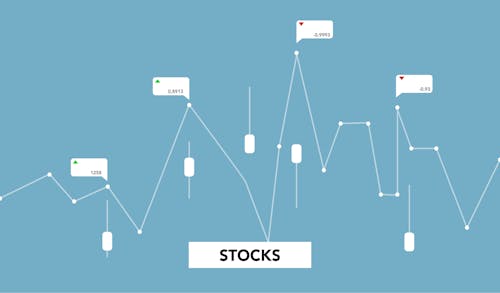The Not-So-Preferred Side Of Preferred Stocks

Image Source: Pexels
Preferred stocks offer a tempting middle ground for investors seeking stability and income. They provide a fixed dividend payout, ranking ahead of common stockholders in line for those payouts. However, before diving into the world of preferred stocks, it’s crucial to understand the drawbacks that come with this investment.
One significant disadvantage of preferred stocks is the lack of voting rights. Unlike common shareholders who have a say in company decisions, preferred shareholders typically have no or limited voting power. This means you give up some influence over the company’s direction in exchange for the fixed dividend.
Another downside is no capital appreciation potential. Preferred dividends are fixed, meaning their value doesn’t fluctuate with the company’s performance. While this offers stability, it also means you miss out on the potential for significant stock price growth that common stocks can offer.
Preferred stock prices are more likely to be swayed by interest rates than company performance. If interest rates rise, the fixed dividend of a preferred stock becomes less attractive, potentially causing the stock price to fall. So if you buy preferred stocks because you think that interest rates are going to drop in value, causing your preferred stock to go up, then maybe you should be trading the futures market on interest rates.
Here is a real-life example. The Pacific Gas and Electric Company 6% 1st Cumulative Redeemable Preferred stock (PCG.PR.A) (PCG-PA) has a par value of $25. (Depending on your stock platform, the stock symbol may be different.) In the beginning of January of 2022, the stock was selling at 29.20. As interest rates started to go up, the price of the stock began dropping. It is now trading at 23.94.
If you think that buying a preferred stock ETF might be safer, think again. Look at the SPDR ICE Preferred Securities ETF (PSK) which traded at 42.31 and the beginning of 2022. Now it is at 33.51, a drop of over 20.7%, grossly offsetting any income receive during that time. Plus, if we don’t ever see those low rates again then, the ETF may never recover.
Many economists and analysts were predicting several interest rate drops this year from the Fed, and that hasn’t happened.
The Big Takeaway About Preferred Stocks
If interest rates stay the same from now on, the stock will never get back to that higher price, and won’t even get to the 25 par value. The important issue to keep in mind is that preferred stocks don’t have a yield to maturity.
At least if you own a bond, you know that eventually, you will get the par value of at maturity, of generally $1000.
Furthermore, compared to bonds, preferred stocks generally carry lower credit ratings. This translates to higher risk of default, where the company may suspend or eliminate dividend payments altogether. While preferred shareholders get paid before common shareholders in a liquidation scenario, they still rank behind bondholders.
Finally, preferred stocks can sometimes be less liquid than common stocks. This means it may be harder to buy or sell them at your desired price, especially for less widely traded issues. The bid-ask spread, the difference between the price a buyer is willing to pay and the price a seller is willing to accept, can be wider for preferred stocks compared to common stocks.
You may think that preferred stocks can be a valuable addition to a diversified portfolio, but understanding the limitations is key. They may not be the ideal choice for investors seeking high growth potential or a strong voice in company governance. Carefully weigh the disadvantages against your investment goals before adding preferred stocks to your portfolio.
More By This Author:
Making Money With Cash-Secured Puts: A Stock Investor’s Strategy
Unlocking Potential: Will Firearm Stocks Achieve Their Target Price?
Stocks Going Ex Dividend In July 2024
Disclosure: The author didn’t own any of the above at the time the article was written, and has no plans to do so.
Disclaimer: This article is designed to provide ...
more


